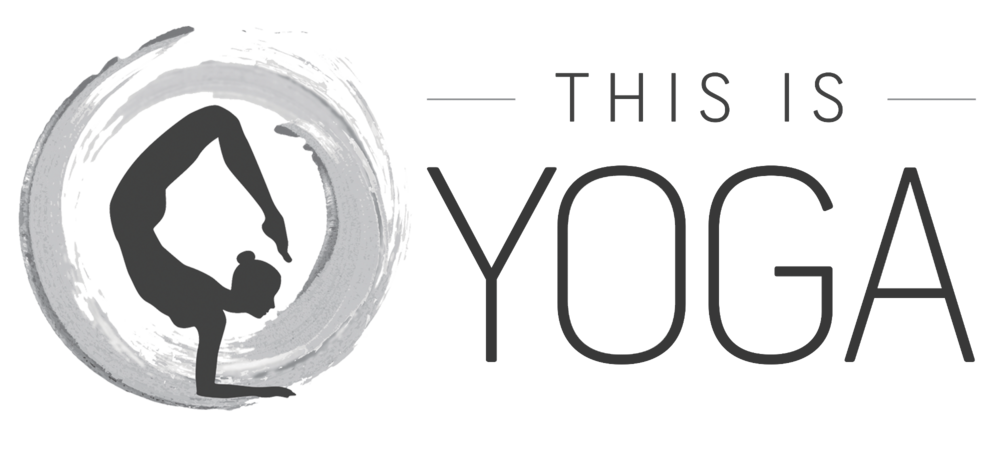Building habits and equally breaking habits can be a challenging process with many ups, down & possibly multiple attempts. Generally, approaching habits with a plan and some forethought can set you up for success. James Clear, author of New York Times bestselling book ‘Atomic Habits’, outlines below how you can track your habits and why this approach is beneficial.
If you want to stick with a habit for good, one simple and effective thing you can do is keep a habit tracker.
Here's why:
Elite performers will often measure, quantify, and track their progress in various ways. Each little measurement provides feedback. It offers a signal of whether they are making progress or need to change course.
Gabrielle Hamilton, a chef in New York City, provides a good example. During an interview with the New York Times, she said, “The one thing I see that consistently separates the chef from the home cook is that we taste everything, all the time, before we commit it to the dish, right down to the grains of salt. We slurp shot glasses of olive oil and aerate them in our mouths as if it were a wine we were trying to know. We taste the lamb, the fish, the butter, the milk before we use it… we chew salt to see how we like it in our teeth, on our tongues, and to know its flavour, its salinity.”
For the chef, tasting the ingredients tells them whether they are making progress toward their desired end goal. It provides the immediate feedback they need to get the recipe just right.
Like a chef improving a recipe through trial and error, we often improve our habits through trial and error. If one approach doesn't deliver the desired effect, then we adjust—like a chef tweaking the amount of an ingredient.
However, there is an important difference between getting feedback while cooking a meal and getting feedback while building a habit. When it comes to building a habit, feedback is often delayed. It's easy to taste an ingredient or to watch bread rise in the oven. But it can be difficult to visualize the progress you are making with your habits. Perhaps you've been running for a month, but you still don't see a change in your body. Or maybe you managed to meditate for 16 straight days, but you still feel stressed and anxious at work.
Habit formation is a long race. It often takes time for the desired results to appear. And while you are waiting for the long-term rewards of your efforts to accumulate, you need a reason to stick with it in the short-term. You need some immediate feedback that shows you are on the right path.
And this is where a habit tracker can help.
The Habit Tracker: What It Is and How It Works
A habit tracker is a simple way to measure whether you did a habit.
The most basic format is to get a calendar and cross off each day you stick with your routine. For example, if you meditate on Monday, Wednesday, and Friday, each of those dates gets an X. As time rolls by, the calendar becomes a record of your habit streak.
To make this process as easy as possible, I created the Habit Journal, which includes 12 habit tracker templates—one for each month. All you have to do is add your habit and start crossing off the days.
Placing an X on each day is the classic look. I prefer something a little more design-oriented, so I shade in the cells on my habit tracker. You could also use checkmarks or fill your habit tracker with dots.
No matter what design you choose, the key point is your habit tracker provides immediate evidence that you completed your habit. It's a signal that you are making progress. Of course, that's not all it does…
Habit tracking is powerful for three reasons.
It creates a visual cue that can remind you to act.
It is motivating to see the progress you are making. You don't want to break your streak.
It feels satisfying to record your success in the moment.
Let's break down each one.
Benefit #1: A habit tracker reminds you to act.
Habit tracking naturally builds a series of visual cues. When you look at the calendar and see your streak, you’ll be reminded to act again.
Research has shown that people who track their progress on goals like losing weight, quitting smoking, and lowering blood pressure are all more likely to improve than those who don’t. One study of more than sixteen hundred people found that those who kept a daily food log lost twice as much weight as those who did not. A habit tracker is a simple way to log your behaviour, and the mere act of tracking a behaviour can spark the urge to change it.
Habit tracking also keeps you honest. Most of us think we act better than we do. Measurement offers one way to overcome our blindness to our own behaviour and notice what’s really going on each day. When the evidence is right in front of you, you’re less likely to lie to yourself.
Benefit #2: A habit tracker motivates you to continue.
The most effective form of motivation is progress. When we get a signal that we are moving forward, we become more motivated to continue down that path. In this way, habit tracking can have an addictive effect on motivation. Each small win feeds your desire.
This can be particularly powerful on a bad day. When you’re feeling down, it’s easy to forget about all the progress you have already made. Habit tracking provides visual proof of your hard work—a subtle reminder of how far you've come. Plus, the empty square you see each morning can motivate you to get started because you don't want to lose your progress by breaking your streak.
Benefit #3: A habit tracker provides immediate satisfaction.
Finally, tracking feels rewarding. It is satisfying to cross an item off your to-do list, to complete an entry in your workout log, or to mark an X on the calendar. It feels good to watch your results grow and if it feels good, then you’re more likely to endure.
Habit tracking also helps keep your eye on the ball: you’re focused on the process rather than the result. You’re not fixated on getting six-pack abs, you’re just trying to keep the streak alive and become the type of person who doesn’t miss workouts.
Habit Tracker Ideas
Alright, those benefits sound great, but it's not necessary to fill your habit tracker with every habit that makes up your day. In fact, if you're already sticking to a habit, then it seems like extra work to me to track it as well. So what should you measure in your habit tracker?
Habit tracking can help kickstart a new habit or keep you on track with behaviours that you tend to forget or let slide when things get busy.
In Atomic Habits, I recommend using the Two-Minute Rule, which suggests you scale your habits down until they take two minutes or less to perform. You can track whatever habits you want in your habit tracker, but I recommend starting with these super small habits to make sure that you are at least showing up in a small way each day. I'll share some examples below and break them out by daily, weekly, and monthly habits.
Common daily habits to track:
journal 1 sentence
read 1 page
meditate 1 minute
do 1 push up
stretch for 1 minute
write 1 thing I'm grateful for
make your bed
wake up by [TIME]
go to bed by [TIME]
take a shower
floss teeth
weigh myself
take medication
take vitamins/supplements
play [INSTRUMENT] for 1 minute
contact 1 potential client
prioritize to-do list
say “I love you” at least once
put all dishes put away
take a walk outside
call mom
walk the dog
Notice that most items on this list can be completed in two minutes or less. Make your habits so easy that you can stick to them even on the hard days.
For something to become truly habitual, you need to repeat it frequently. As a result, most habits are daily. But it can also be helpful to use a habit tracker for various weekly or monthly routines. These behaviours won't become “automatic” like tying your shoes or brushing your teeth, but a habit tracker can remind you to complete them nonetheless.
Common weekly habits to track:
publish blog post
vacuum
take out trash/recycling
do the laundry
water the plants
tidy up your bedroom
write a thank you note
Monthly habits:
You can also use a habit tracker to simply count how often you do something. For example, if you want to keep track of how many days you travel for work each month.
Other ideas:
days spent traveling
conduct weekly review
conduct monthly review
Finally, you can use a habit tracker to measure what you don't do. I call these “habits of avoidance” (that is, behaviours you are trying to avoid).
Habits of avoidance:
no alcohol
no Netflix
no online purchases
no soda
no sugar
no caffeine
no smoking
Again, the Habit Journal offers a proven template and the fastest way to create your habit tracker. No need to spend an hour drawing your own grid. Just write your habits down and you're ready to go.
How to Get in the Habit of Using Your Habit Tracker
Despite all of the benefits, a habit tracker is not something that makes sense in every situation or for every person. Many people resist the idea of tracking and measuring. It can feel like a burden because it forces you into two habits: the habit you’re trying to build and the habit of tracking it. That said, nearly anyone can benefit from habit tracking in one form or another—even if it’s only temporary.
What can we do to make habit tracking easier?
First, manual tracking should be limited to your most important habits. It is better to consistently track one habit than to sporadically track ten. I tend to keep my habit tracker simple and limit it to my three or four most important habits.
Second, record each measurement immediately after the habit occurs. The completion of the habit is the cue to write it down. (This is a twist on the “habit stacking” approach I discuss in Chapter 5 of Atomic Habits.)
Here's the basic formula: After [CURRENT HABIT], I will [TRACK MY HABIT].
For example:
After I hang up the phone from a sales call, I will mark the “call 1 potential client” column.
After I finish meditating, I will fill the “meditate for 1 minute” column.
After I put my plate in the dishwasher, I will complete the “put all dishes away” column.
Basically, what we are talking about here is getting in the habit of using your habit tracker. These little rules help you remember to pick up your habit tracker and mark off another accomplishment.
How to Recover Quickly When Your Habits Break Down
Finally, I want to discuss what to do when you fall off the wagon.
Every habit streak ends at some point. Perfection is not possible. Before long, an emergency will pop up—you get sick or you have to travel for work or your family needs a little more of your time. Whenever this happens to me, I try to remind myself of a simple rule:
Never miss twice.
If I miss one day, I try to get back into it as quickly as possible. Missing one workout happens, but I’m not going to miss two in a row. Maybe I’ll eat an entire pizza, but I’ll follow it up with a healthy meal. As soon as one streak ends, I get started on the next one. I can’t be perfect, but I can avoid the second mistake.
Generally speaking, the first mistake is never the one that ruins you. It is the spiral of repeated mistakes that follows. As I write in Atomic Habits, “Missing once is an accident. Missing twice is the start of a new habit.”
Too often, we fall into an all-or-nothing cycle with our habits. The problem is not slipping up; the problem is thinking that if you can't do something perfectly, then you shouldn't do it at all.
Sure, a perfectly filled-in habit tracker looks beautiful and you should strive to achieve it whenever possible. But life is messy. In the long run, what matters is that you find a way to get back on track.
How Long Do I Need to Track My Habits?
One of the most common questions I get is “How long does it take to build a habit?”
You'll see all kinds of answers: 21 days, 30 days, 100 days. One popular answer right now is 66 days because there was one study that found that, on average, it took 66 days to build a habit. However, even within that study the range was quite wide depending on the difficulty of the habit.
I find that people are really trying to get at something else when they ask, “How long does it take to build a habit?” What they often mean is, “How long until it's easy? How long until I don't have to put much effort in anymore?”
Look, all habits get easier with practice. But this line of questioning ignores the real purpose of building better habits in the first place.
How long does it take? The honest answer is: forever. Because once you stop doing it, it is no longer a habit.
A habit is a lifestyle to be lived, not a finish line to be crossed. You are looking to make small, sustainable changes you can stick with for years. And a habit tracker is one tool in your toolbox on the road to behaviour change. It is an effective way to prove to visualize your progress and motivate you to show up again tomorrow.




















